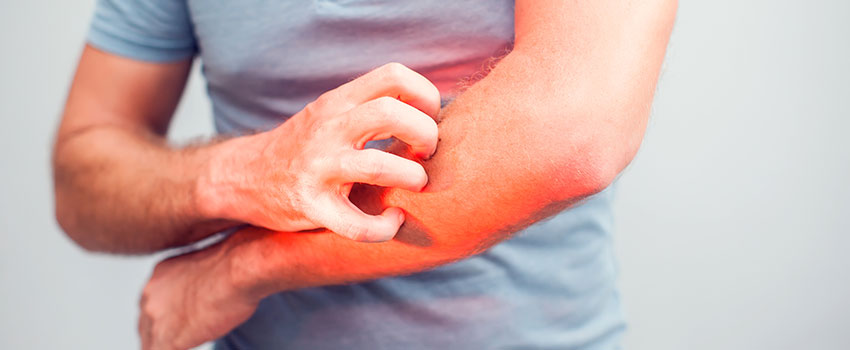What’s That Itch?

Whether you’re taking a long, backpacking vacation or just visiting a local pick-your-own berry farm, summer is the season for prowling through the undergrowth. And that means rashes.
Even brushing slightly against a rash-causing plant can give you a rash that forms blisters and itches painfully. Heat itself can cause other rashes.
Read on as our team at AFC Urgent Care Indian Trail shares some insight.
Do I Have Poison Ivy?
In the U.S., poison ivy, poison oak and poison sumac form a trifecta of itchiness. You can identify poison ivy and poison oak by their three-leaf clusters, while poison oak leaves grow in clusters along a stem. The rash from all three results from an oil they produce that sticks to the skin.
To treat poison ivy, first wash with lukewarm water and soap. No water available? Use a product that contains alcohol, such as a hand sanitizer. If you end up with a rash, try calamine lotion or over-the-counter diphenhydramine.
Other Plants That Can Cause a Rash
- Giant hogweed (Queen Anne’s lace)
- Nettles
- Ragweed
- Wild parsnip
Can Heat Give You a Rash?
Caused when sweat is trapped inside the skin, prickly heat is especially common in hot, humid weather. Symptoms range from red skin to small blisters.
When clothes are too thick, prickly heat can form more easily. People can encounter this when they wear heavy work clothes. Infants (who can’t tell you that their blankets, car seat pads or clothes are too hot) also tend to get prickly heat.
Soothing Summer Rashes
- Wear loose, light clothing of natural fabrics.
- Apply a cool, wet compress.
- Sprinkle with cornstarch-based bath powder.
- Use an over-the-counter antihistamine salve.
- Rest in a cool oatmeal bath.
- Try not to scratch!
Still have questions about your rash? Make an AFC TeleCare appointment with our AFC Urgent Care Indian Trail team to get the advice you need from home.
